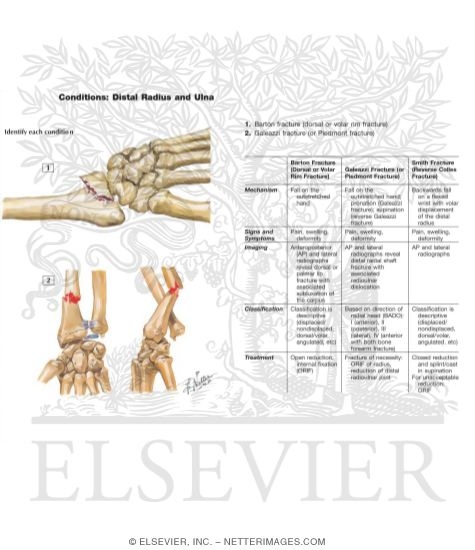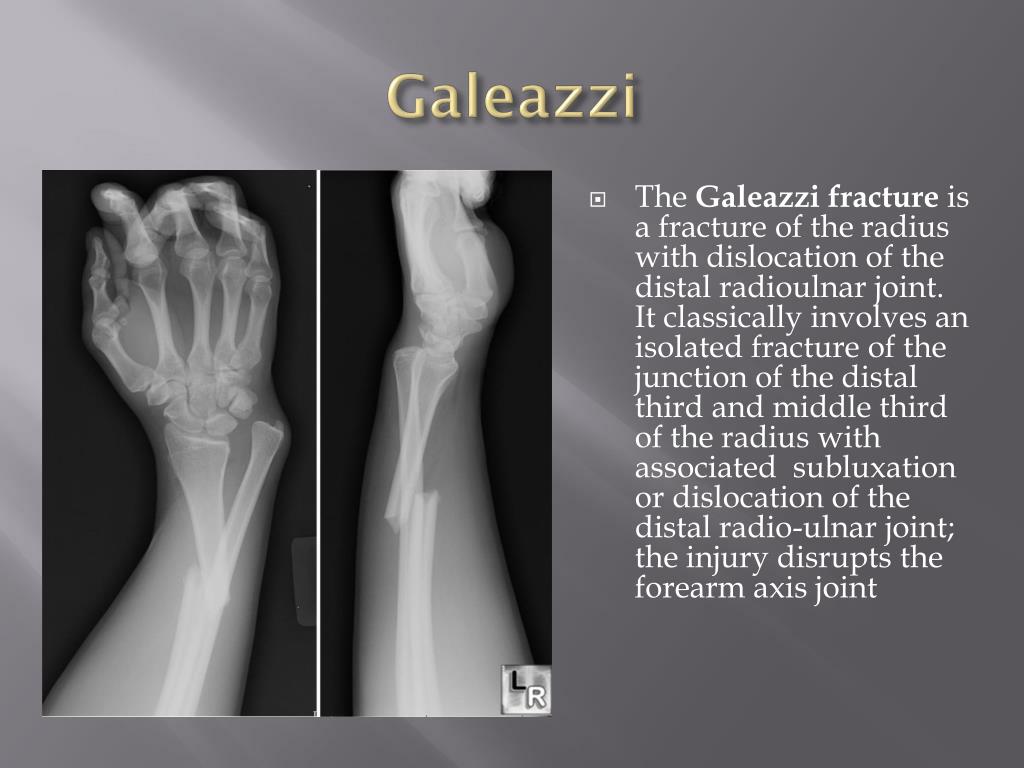
Pediatric forearm fractures typically follow indirect trauma, such as a fall on an outstretched hand coupled with a rotational component. Additional remodeling can also be attributed to elevation of the thick osteogenic periosteum after fracture. This polarization of growth shows why distal fractures demonstrate a higher remodeling potential than do fractures closer to the elbow. The distal radial and ulnar growth plates are responsible for 75% and 81% of the longitudinal growth of each bone, respectively.

The interosseous membrane is higher strain proximally in neutral and pronation, and is higher strain distally when in supination. The radial bow, an apex lateral bend in the radius, increases the range of pronation. Radius and ulna are attached by the proximal annular ligament, by the interosseous membrane along the diaphysis, and distally by the ligaments of the distal radioulnar joint and triangular fibrocartilage complex. Anatomically, the ulna is relatively straight and static, it plays a more important role in maintaining forearm stability, especially when subjected to buckling and torsional stress. Understanding pediatric forearm anatomy offers important guidelines for treatment in the nonoperative and operative settings. Both forearm bones were fractured in 50.1% of cases of forearm injuries and there were significantly more males than females (63.6% vs. found forearm fractures to be significantly more frequent in school age children (65%) and adolescents (63%) compared to infants (42%) and preschool children (50%). Forearm fractures account for 17.8% of all fractures in pediatric age. using the 2010 NEISS report, estimated in children aged 0 to 19 years, 5,333,733 emergency room (ER) visits, of which 788,925 (14.7%) were fracture related. 2009 34(9):1618–24.Forearm fractures are the most common type of fractures in the pediatric population, but, to date, no comprehensive overviews of their epidemiology are available. Long-term evaluation of surgically treated anterior monteggia fractures in skeletally mature patients. The posterior Monteggia lesion with associated ulnohumeral instability. Strauss EJ, Tejwani NC, Preston CF, Egol KA. The surgical treatment of isolated mason type 2 fractures of the radial head in adults: comparison between radial head resection and open reduction and internal fixation. Zarattini G, Galli S, Marchese M, Mascio LD, Pazzaglia UE.

Comparison between radial head arthroplasty and open reduction and internal fixation in patients with radial head fractures (modified Mason type III and IV): a meta-analysis. Surgical treatment of the radial head is critical to the outcome of Monteggia-like lesions. Klug A, Konrad F, Gramlich Y, Hoffmann R, Schmidt-Horlohe K. Monteggia fractures in adults: long-term results and prognostic factors. Konrad GG, Kundel K, Kreuz PC, Oberst M, Sudkamp NP. Monteggia fractures in children and adults. Pediatric monteggia fractures: a multicenter examination of treatment strategy and early clinical and radiographic results. Monteggia fractures and variants: review of distribution and nine irreducible radial head dislocations. Management of adult elbow fracture dislocations. “Isolated” traumatic radial-head dislocation. Limitations of the radiocapitellar line for assessment of pediatric elbow radiographs. Kunkel S, Cornwall R, Little K, Jain V, Mehlman C, Tamai J.

A line drawn along the radial shaft misses the capitellum in 16% of radiographs of normal elbows. Disruption of the radiocapitellar line in the normal elbow. Nerve injuries complicating Monteggia lesions. Neglected Monteggia fracture dislocations in children: a systematic review. Goyal T, Arora SS, Banerjee S, Kandwal P. Jupiter JB, Leibovic SJ, Ribbans W, Wilk RM. Givon U, Pritsch M, Levy O, Yosepovich A, Amit Y, Horoszowski H. Monteggia fracture dislocations: a historical review. Rehim SA, Maynard MA, Sebastin SJ, Chung KC. Unstable fracture-dislocations of the forearm.


 0 kommentar(er)
0 kommentar(er)
